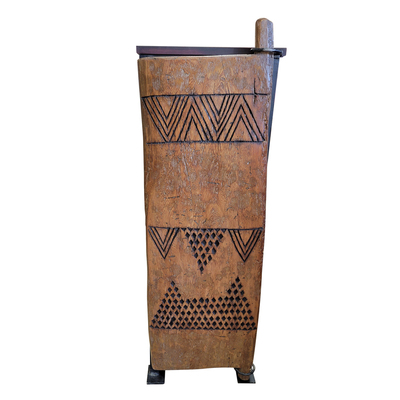Railantique
Railantique furniture and pedestals are made from recycled African railway sleepers (in the U.S. they are called railroad ties). These sleepers were laid in the African soil over a hundred years ago, and the trees from which they were milled had been living another 300-1200 years before that. The builders of the African railways selected these solid teak woods for their weight and density, since they needed to survive the rigors of the harsh African climate without the use of any chemical preservatives. The color and character the wood has acquired from a century in African soil is rich and deeply shaded, which gives each piece of furniture an absolutely unique look and feel.
After colonial rule in Africa was abolished, the aging railway lines were either upgraded or discarded, and the wood (once used as firewood) has now found a new life in the hands of the African craftsmen who expertly shape it into beautiful heirloom quality works of art. ...More...
This is perhaps the only opportunity to own furniture made from trees that may have been living in the 1300’s and 1400’s, before even Columbus sailed to America. This teak wood virtually throbs with the life of the dense, old-growth, hardwood jungle from which it came. Unlike most exotic hardwoods today, its re-use as furniture in no way contributes to the destruction of any fragile ecosystems. It is estimated that in the next decades the supply of these timbers will be exhausted. There will never be any more like them....Less...
After colonial rule in Africa was abolished, the aging railway lines were either upgraded or discarded, and the wood (once used as firewood) has now found a new life in the hands of the African craftsmen who expertly shape it into beautiful heirloom quality works of art. ...More...
This is perhaps the only opportunity to own furniture made from trees that may have been living in the 1300’s and 1400’s, before even Columbus sailed to America. This teak wood virtually throbs with the life of the dense, old-growth, hardwood jungle from which it came. Unlike most exotic hardwoods today, its re-use as furniture in no way contributes to the destruction of any fragile ecosystems. It is estimated that in the next decades the supply of these timbers will be exhausted. There will never be any more like them....Less...







